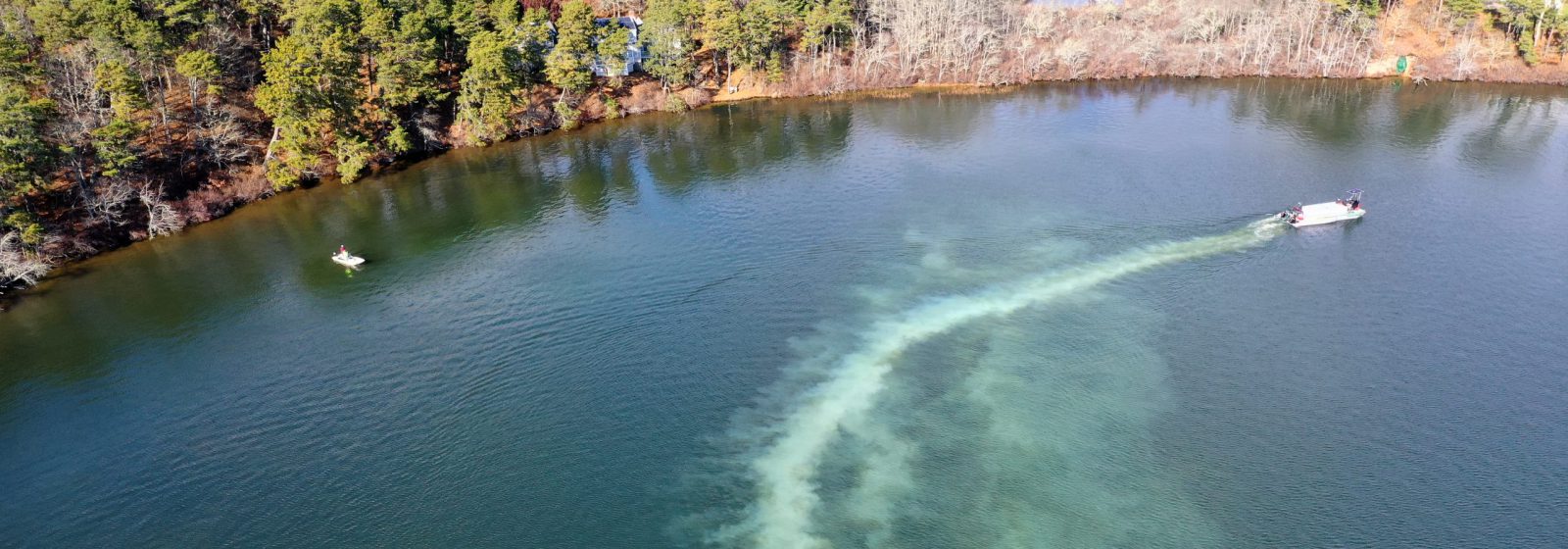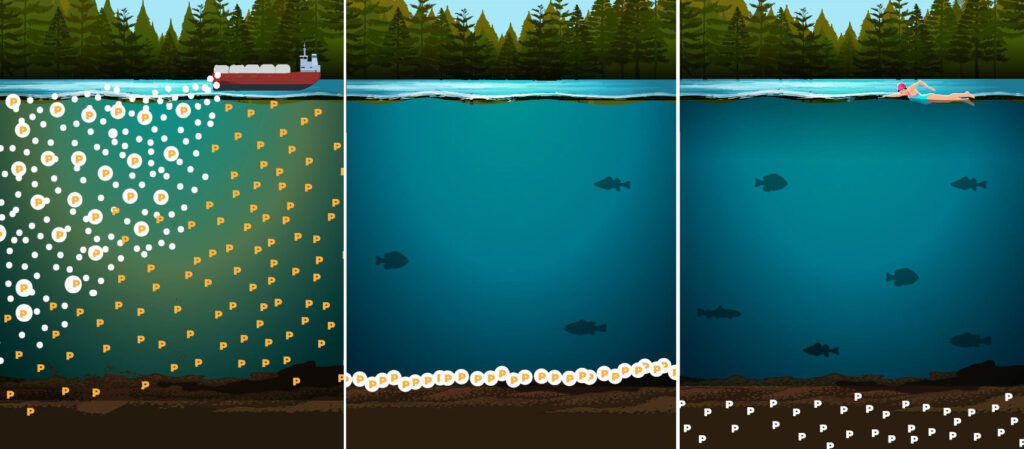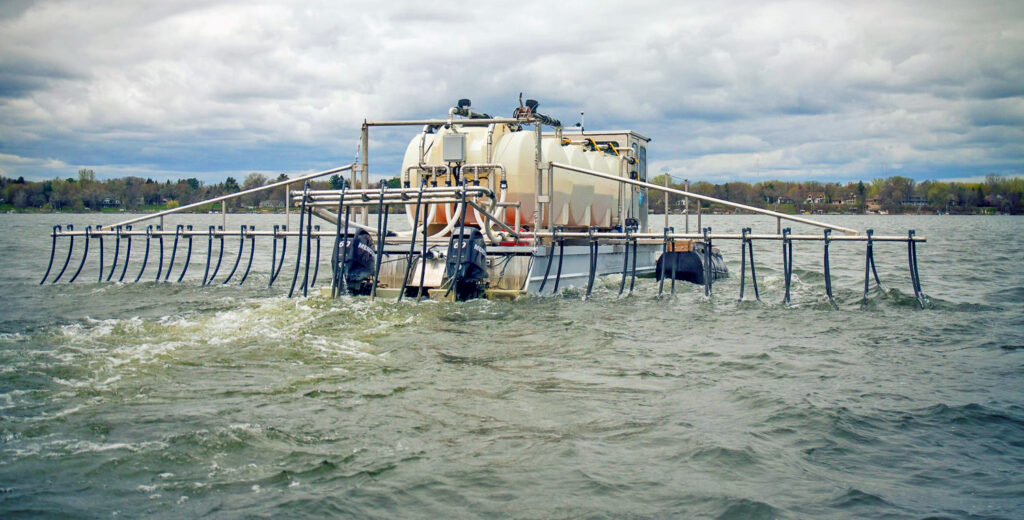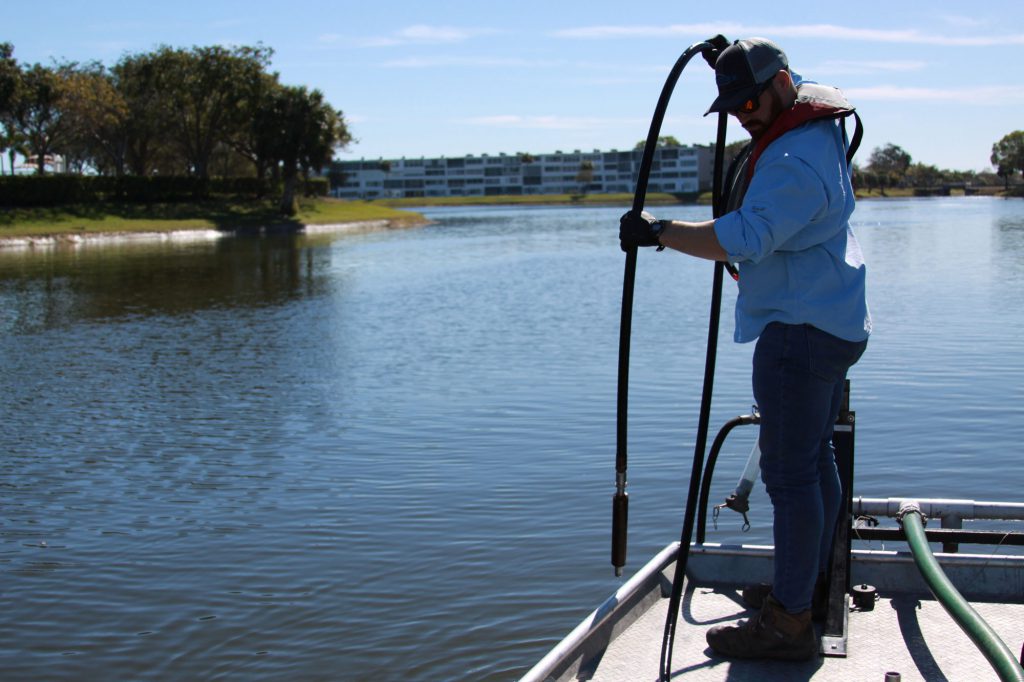

Maintain Clean Recreational Lakes & Safe Drinking Water with Alum Applications
Lakes serve many purposes like recreation, drinking water, or simply providing a space to enjoy nature, so keeping them healthy is vital. However, maintaining clean, beautiful water can be difficult in large lakes.
Though nutrients like phosphorus and nitrogen are necessary to support the food chain, when in excess, they can create problems in aquatic ecosystems. Nutrient pollution and rising temperatures fuel toxic algal blooms, aquatic weeds, fish kills, and foul odors, among other water quality issues. Impaired lakes not only prevent residents from boating, swimming, and kayaking, but they can also diminish property values and pose health risks in drinking water if harmful algal blooms are present.
Fortunately, with alum applications, you can take a proactive approach to water management and maintain healthy nutrient levels, thus reducing the likelihood of water quality issues developing.
Funding Your Water Quality Restoration Project
SOLitude’s team of alum experts has extensive experience helping lake associations and municipalities obtain federal and state grant funding, both for planning and treatment, and navigate the complex permitting processes. With these funding options, our team has helped several communities restore their water quality through alum applications.
Does your community need funding for a water quality restoration project? We can guide you through each step of the process, from planning and educating stakeholders to securing funding and conducting treatments. Contact our experts today.
Restore Your Water Quality with Alum

What is Alum?
Alum (aluminum sulfate) is a safe, well-studied substance. In fact, it’s a common food additive and is the third most abundant element in the earth’s crust after oxygen and silicon.
Endorsed by the North American Lake Management Society (NALMS), alum has been used for over 60 years to help mitigate excess nutrient levels. This nutrient remediation solution is fast-acting and long-lasting, making it an excellent water quality restoration solution for recreational lakes, drinking water reservoirs, and wastewater treatment plants.

How does alum work in the water?
Step 1: When injected below the surface using specialized equipment and application technology, alum reacts with water, forming a floc that binds phosphorus and other particles throughout the water column.
Step 2: As the floc quickly sinks to the bottom of the waterbody, water quality and clarity improve and steadily enhance over time.
Step 3: The settled floc provides millions of phosphorus-binding sites, blocking the release of phosphorus from the sediment.

How is alum applied?
SOLitude’s team of experts has completed over 200 alum projects, improving over 35,000 acres of water in recreational lakes and drinking water reservoirs. Our state-of-the-art application vessels are custom-designed to apply alum safely and effectively.
The alum barge is equipped with meticulously calibrated pump systems that maintain a target dose rate that adapts to changes in vessel speed. Operated via computerized GPS guidance, these pumping systems dynamically adjust flow rates according to boat speed and depth readings to help ensure uniform alum dosage throughout the waterbody.
To maintain precise applications, we’ve incorporated submerged nozzles into our systems, which helps to counter disturbances caused by wind or surface currents and prevent fluctuations in water quality parameters such as pH. To ensure water quality remains balanced, the pH is monitored in real-time throughout the application.
Debunking Misconceptions About Alum
While safe, alum applications can lead to pH imbalances when conducted by inexperienced hands. We understand how important it is to protect our aquatic resources. SOLitude’s skilled experts understand the science behind lake management and are educated on precise product calculations and application techniques.
Our professionals are also experienced in the application of sodium aluminate, which serves as a buffer to maintain healthy pH levels. Our team has a deep technical knowledge of proper product ratios which allows them to maximize resources and eliminate risks of toxicity to humans and wildlife.

What types of waterbodies does alum work best in?
Alum is a popular water quality restoration tool for recreational lakes. With balanced water quality, lakes are less likely to experience water quality issues, which can impede recreational activities or diminish the aquatic ecosystem.
Drinking water reservoirs often rely on alum treatments to improve water quality before it enters the treatment facility. Healthier source water helps limit the likelihood of blue-green algae or cyanobacteria from developing. While these toxins can be removed through the reservoir’s treatment facility, this is an expensive process and often leads to odor and taste issues in drinking water. With alum, drinking water reservoirs have healthier water going into the treatment plant which means cleaner, safer water for the local community.
Alum applications are also effective in wastewater holding ponds to reduce turbidity and legacy phosphorus which helps facilities avoid fees from environmental regulatory agencies.
Achieve Optimal Results with Integrated Lake Management
To get the most out of alum applications, aquatic resource professionals recommend pairing the solution with other sustainable tools like aeration to help oxygenate your lake or pond and beneficial vegetative buffers to help filter excess nutrients from entering the waterbody. It is always recommended to conduct regular water quality tests to monitor nutrient levels and stay ahead of any potential water quality issues.
Developing a holistic management plan will help maintain healthy levels of nutrients and enhance the overall health of your aquatic ecosystem so it can be enjoyed and appreciated year-round.










